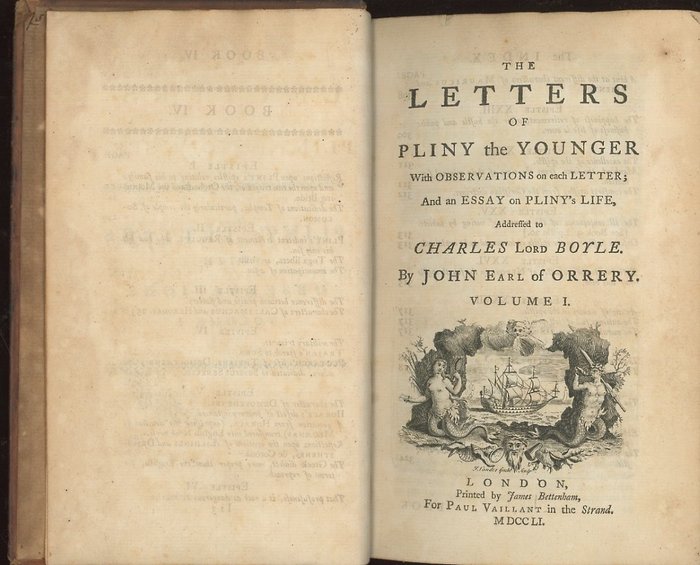
John, late Earl of Rochester, Otway & Phillips - Familiar letters - 1699
N.º 82919403

N.º 82919403

2 vols., 4to, Vol. I: [4], lxxv, [1], 397, [1] pp, indexVol. II: [4], 450, pp index, [1] explanation of the copperplates; engraved vignette title-pp. by J. Vander Gucht, engraved initials, tail- and head-pieces designed by S. Wale and engraved by J. Bonneau; Book X with engraved vignette title-p
Gaius Plinius Caecilius Secundus, born Gaius Caecilius or Gaius Caecilius Cilo (61 – c. 113), better known as Pliny the Younger (/ˈplɪni/), was a lawyer, author, and magistrate of Ancient Rome. Pliny's uncle, Pliny the Elder, helped raise and educate him.
Pliny the Younger wrote hundreds of letters, of which 247 survived, and which are of great historical value. Some are addressed to reigning emperors or to notables such as the historian Tacitus. Pliny served as an imperial magistrate under Trajan (reigned 98–117), and his letters to Trajan provide one of the few surviving records of the relationship between the imperial office and provincial governors.
Pliny rose through a series of civil and military offices, the cursus honorum. He was a friend of the historian Tacitus and might have employed the biographer Suetonius on his staff. Pliny also came into contact with other well-known men of the period, including the philosophers Artemidorus and Euphrates the Stoic, during his time in Syria. [wikipedia]
Cómo comprar en Catawiki
1. Descubre algo especial
2. Haz la puja más alta
3. Paga de manera segura